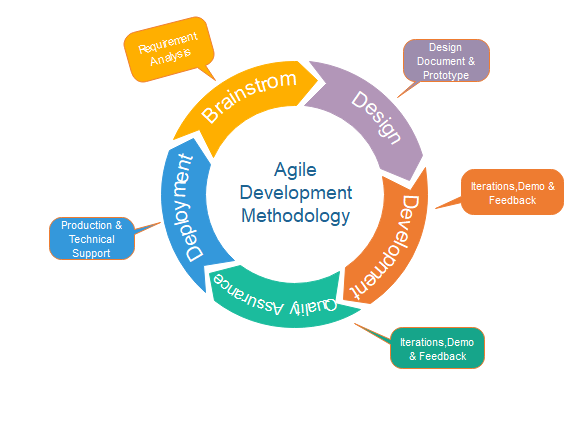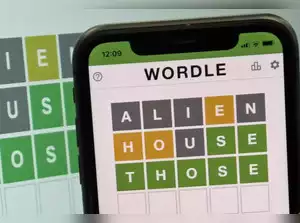The Agile Methodology Diagram Explained 2023

Agile methodology is a dynamic approach to project management that emphasizes flexibility, collaboration, and customer satisfaction. At the core of this methodology lies a powerful tool—the Agile Methodology Diagram. In this article, we’ll delve into the intricacies of this visual aid, unlocking its potential to streamline project workflows and enhance overall efficiency.
Understanding Agile Methodology: A Brief Overview
Before we plunge into the specifics of the Agile Methodology Diagram, let’s take a moment to understand the Agile methodology itself. Agile is a project management and product development approach that prioritizes iterative progress, adaptability to change, and close collaboration between cross-functional teams. Its principles, outlined in the Agile Manifesto, have transformed the way teams approach complex projects.
The Role of Visuals: Why Agile Methodology Diagram Matters
In the realm of Agile project management, clarity and communication are paramount. This is where the Agile Methodology Diagram steps in as a visual aid, offering a comprehensive overview of the entire Agile process. Through graphical representation, the diagram captures the flow of tasks, feedback loops, and the collaborative nature of Agile development. It serves as a shared reference point for teams, fostering a common understanding of project goals and timelines.
Breaking Down the Components: Key Elements of Agile Methodology Diagram
To truly grasp the significance of the Agile Methodology Diagram, let’s break down its key components. The diagram typically includes stages such as project initiation, planning, execution, monitoring, and closure. Each stage incorporates specific Agile practices and ceremonies, such as sprint planning, daily stand-ups, and retrospectives. By visually mapping out these components, teams gain a holistic view of the project’s lifecycle.
Navigating the Flow: How Agile Methodology Diagram Works in Practice
Imagine the Agile Methodology Diagram as a roadmap guiding teams through the iterative cycles of development. As teams move from one stage to the next, the diagram illustrates the seamless flow of tasks and collaboration points. This visual representation fosters transparency, allowing team members to anticipate and respond to changes effectively. It acts as a compass, ensuring that the team stays aligned with Agile principles throughout the project.
Enhancing Collaboration: Agile Methodology Diagram in Action
One of the remarkable aspects of the Agile Methodology Diagram is its ability to enhance collaboration. By providing a shared visual framework, teams can quickly identify bottlenecks, celebrate milestones, and adapt to evolving requirements. The diagram serves as a dynamic tool that evolves alongside the project, encouraging continuous improvement and fostering a culture of collaboration.

Tips for Creating an Effective Agile Methodology Diagram
Now that we’ve established the importance of the Agile Methodology Diagram, let’s explore some tips for creating an effective one. Firstly, simplicity is key. The diagram should convey information clearly and concisely, avoiding unnecessary complexity. Secondly, it should be dynamic and adaptable, capable of accommodating changes throughout the project’s lifecycle. Lastly, involving the entire team in the creation process ensures a collective understanding and ownership of the visual representation.
Common Misconceptions: Debunking Agile Methodology Diagram Myths
As with any powerful tool, misconceptions can arise. Some may perceive the Agile Methodology Diagram as rigid or overly prescriptive. In reality, the diagram is a flexible guide that adapts to the unique needs of each project. It’s not a one-size-fits-all solution but rather a versatile tool that empowers teams to tailor Agile practices to their specific context.
The Evolving Landscape: Agile Methodology Diagram in Modern Project Management
As the landscape of project management continues to evolve, the Agile Methodology Diagram remains a timeless asset. Its adaptability and focus on collaboration align seamlessly with the demands of modern, fast-paced projects. Whether teams are co-located or distributed, the diagram serves as a visual anchor, fostering a sense of unity and purpose.
Conclusion: Harnessing the Power of Agile Methodology Diagram
In conclusion, the Agile Methodology Diagram stands as a beacon in the Agile landscape, guiding teams through the complexities of project management. Its visual representation of Agile principles transcends language barriers, fostering a shared understanding among team members. As projects become more intricate, and collaboration becomes increasingly vital, the Agile Methodology Diagram remains a valuable ally, ensuring teams navigate the Agile journey with clarity and cohesion. So, embrace the visual revolution, unlock the potential of Agile, and let the Agile Methodology Diagram be your compass in the dynamic world of project management.













